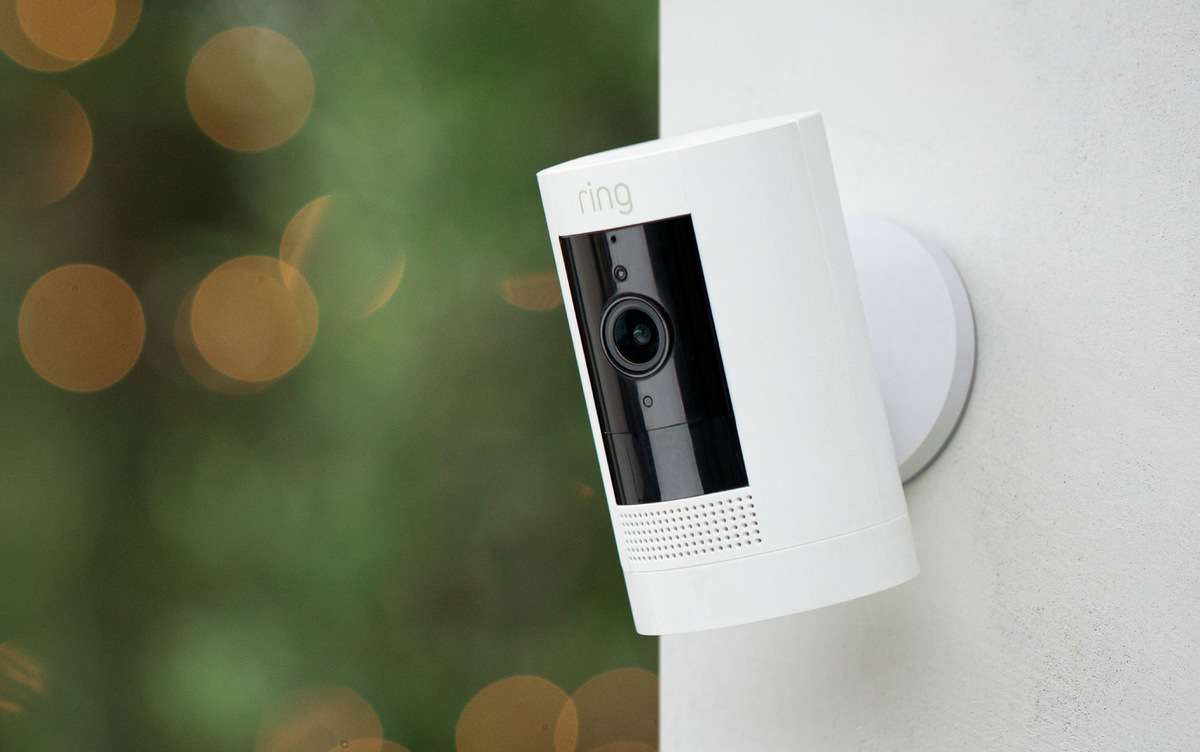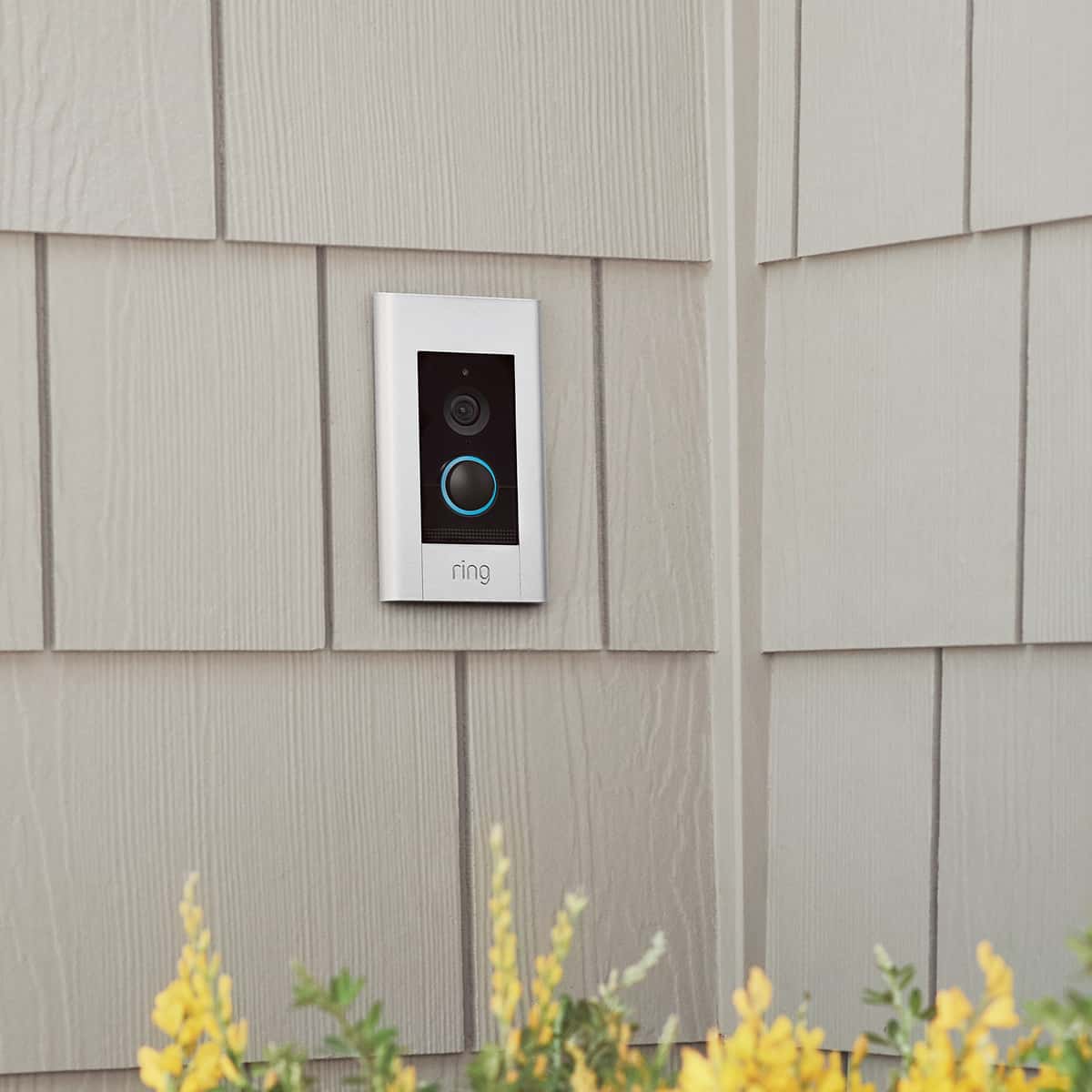Some Ring users unfortunately know this scenario all too well – myself included! You’ve just charged your Ring Video Doorbell or its battery. Then, within a couple of weeks or even days, you get the notification that the battery is dying or dead – again!
How are you supposed to keep your home secure if your camera won’t stay charged long enough to do so? The same issue even happens when it comes to battery-powered Ring Doorbells that have been hardwired. These are supposed to be receiving power via the wiring, so what gives?
What are Ring’s Cameras and Doorbells?
The most popular of Ring's line of smart home products, are their battery-powered cameras and video doorbells.

These doorbells and cameras work via a Wi-Fi connection, which connects them to the internet and the Ring app. If you have a Ring Protect Plan, the videos your camera's and doorbell's recordings are saved here (unless you have the Protect Pro plan and enable local storage, in which case they're stored on a local SD card).
The Ring app is also where you set up your cameras as well as how you want them to work. You can decide where they detect motion and when. You can also adjust settings such as Motion Sensitivity and where you want your cameras to detect motion.
Most of Ring’s battery-powered smart home cameras and doorbells use a removable lithium ion battery that you can charge separately from the camera.

If you have more than one battery, you can simply replace the old one with a spare that’s already charged. The exception to this is the Ring Video Doorbell 2020 release. The battery isn’t removable on this unit, so you have to take down the entire doorbell if you want to recharge it.

Sometimes Ring users have run into the issue of the battery in their cameras and doorbells running out quickly – sometimes within a matter of days!
Because of this, some have opted to hardwire their battery-powered Ring doorbells into their existing doorbell wiring (NB: this may require a diode or resistor being added to the circuit). With this method, the doorbell is supposed to receive power from the wiring. However, this isn’t entirely the case.
Even being hardwired, these doorbells are only trickle charged, meaning, they receive a small amount of power, a.k.a. a “trickle” of electricity. But they are still largely reliant on the battery and are still essentially battery-powered.
For this reason, you'll still receive notifications that the video doorbell needs to be charged. So what’s going on? Why are the cameras and doorbells dying so darn fast?
Why is my Ring Camera Dying so Quickly?
It’s definitely a frustrating problem. You charge the battery in your doorbell or camera, sometimes having to take down the entire unit. This can be especially frustrating if you have to take down a device you hardwired!
Then within a few days, your battery is near death yet again.

Why?? Well, there are a few reasons this may be happening.
Reason #1: Settings
When running into problems with your Ring devices, it’s a good idea to first check your settings. Settings in the Ring app can have a huge impact on how long your Ring doorbell holds a charge.

Motion Sensitivity, for example, can be a factor. The more sensitive your device is to motion, the more it will activate, and the more battery power it will use. To that end, adjusting your device’s motion sensitivity can help reduce battery-draining usage.

In the Ring app, after you’ve received a low battery warning, it will often give you options to adjust settings that typically use up power.

One item you can adjust is Motion Frequency, which is how often your device checks for motion. Advanced Motion Detection also plays a role by reducing the amount of unwanted footage, thereby saving on battery life. Even the video recording length can be a factor – the longer the recording, the more the battery gets drained.
Try adjusting these settings, then fully charge your Ring doorbell or camera, and keep an eye on it. If your battery lasts, great! If not, it’s time to consider other reasons your battery is draining so quickly.
Are you also encountering warnings like ‘You Are Being Recorded‘ in your Ring App and want to learn how to disable them? Explore our comprehensive guide.
Reason #2: Cold Weather
Ring themselves states that cold weather adversely affects the longevity of your Ring device’s battery, as well as how well it charges even when hardwired. At about 36°F, the battery may not hold a charge well. If it drops another 4°, the battery might not even charge at all. This, unfortunately, extends to hardwired doorbells as well.
Once temperatures drop to -5°F, the battery may stop working altogether. In periods of a cold snap, you may even notice that you’re not receiving Motion Alerts, even though it’s been clear someone has been at the door (i.e. you walking into your home, or the mailman crossing the path of your Motion Zones).
If your region frequently experiences weather like this, you’re likely to experience this on a regular basis. So what can you do to fix this? Well, because this is how lithium ion batteries often perform in this type of weather, not a whole lot.
When it comes time to recharge your devices, make sure to charge them to a full 100% before putting them back outside. This will help give you a longer period of time (even if by just a few days) before you need to recharge your device again.
If your battery is removable and you typically only charge the battery, try bringing the entire doorbell inside next time. This will give the entire unit a chance to warm up as the battery charges.

When the weather warms up, things should improve in terms of battery life.
Reason #3: Faulty Battery or Device
If your temperatures are optimal, and the battery still isn’t holding a charge, it may be time to replace the battery. First, try getting a spare battery. You can purchase one through Ring, Best Buy, or even Amazon.
After making sure your new battery is fully charged, use it to replace the old battery. If the new battery holds a charge well, then you’re good to go.
If the battery still doesn’t hold a charge and wasn’t your problem, it’s most likely that your Ring device is the issue.
In a scenario like this, it’s best to contact Ring Support for the problem. Make sure you have information such as your Ring device model, as well as if you hardwire it or you just use the battery.
Alternatives to Ring Battery Devices
So let’s say you’re not up for the trouble of Ring’s battery-powered devices, or you just want to know what other options are available.
One of the first options you can consider, especially if you want to stick with Ring, is a fully-hardwired doorbell. Ring has a few options such as the Ring Doorbell Wired, Ring Doorbell Pro and Pro 2, and the Ring Doorbell Elite.

The Pro and Pro 2 are wired using existing doorbell wiring. But the Ring Doorbell Elite uses PoE (Power over Ethernet) and needs an ethernet cable to connect to power and the internet.

In terms of an outdoor camera, you can use the Ring Stick-Up Cam Elite, which also works via an ethernet cable.
If you’re thinking of going with another smart home manufacturer for your video doorbell or outdoor cameras, you might run into a similar issue as you do with Ring. This is because most rechargeable units run on lithium ion batteries, and these typically don’t react well to freezing temperatures.
One option that some have explored are Blink’s outdoor cameras. They use two lithium AA batteries, as opposed to a rechargeable lithium ion battery. You will have to replace the batteries at times, but many say these hold up for months, even in cold weather.
But if you’re looking to have your devices constantly receive power without the aid of a battery, a hardwired device is your best bet. This is an option whether you stick with Ring, explore Wyze, or any other smart home brand.
Holding Charge
Having to constantly recharge your Ring camera or video doorbell’s battery can be beyond annoying. This is especially the case when you’ve hardwired it, now you have to take it down to charge it. You get a surveillance camera to keep an eye on things, and it can’t do that from inside your home while it’s charging!
Settings, freezing temps and defective devices are all common culprits in this situation. With a little troubleshooting, you may be able to remedy the problem. If not, giving Ring, a ring, may be your best bet.





